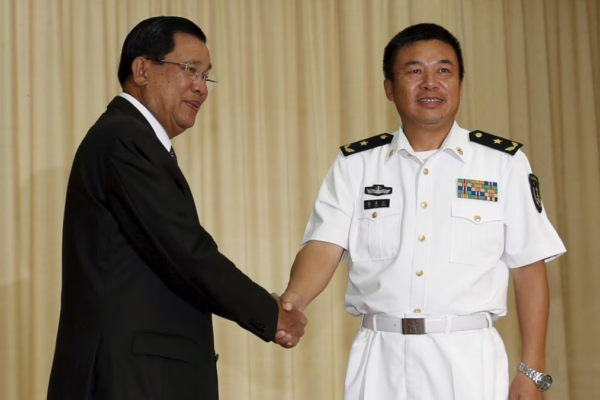Read a version of this story in Korean North Korea publicly executed three men — shooting each one with 90 rounds from a machine gun — for attempting to flee to democratic South Korea, a witness and a resident who heard about the execution told Radio Free Asia. Authorities then burned their corpses in front of horrified residents of the town, who were forced to watch, the sources said. The three men, all in their 30s, had been caught in January when trying to escape to the South by boat. Lost in fog on the sea, they thought they had crossed the border when they saw what they assumed was a South Korean fishing vessel. They called out for help, but it turned out to be a North Korean patrol boat that caught them in the act, and they were promptly arrested, the two sources told RFA Korean. A North Korean navy ship, top right, patrols near fishing boats at South Korea-controlled Yeonpyeong island, May 31, 2009.(Byun Yeong Wook/AFP) By publicly executing the men — and telling villagers they would face a similar fate — authorities sought to scare anyone who might be thinking about fleeing themselves, the sources said. The incident reflects harsher punishment for escapees. In past years they would have been sent to reeducation camp for a maximum of 15 years. But now they will be killed by firing squad, with residents in the area forced to watch, the sources said. Public executions are a common occurrence in North Korea, for crimes like murder or human trafficking, or even distribution South Korean videos. Tied to stakes The three men — two brothers surnamed Kim and their friend surnamed Ri — were from South Hwanghae province, which borders South Korea on the peninsula’s west coast. A resident from the northwestern province of North Pyongan, who witnessed the execution while on a trip to South Hwanghae, described it in detail to RFA Korean, saying that it occurred in the the village of Songjong-ri in February, and the three men were tied to stakes. “We witnessed the young men being dragged out with black cloths over their eyes and gagged, being shot dozens of times and their bodies being torn to pieces,” he said. “Usually those who are to be executed are tied to the stake in three places: the neck, the torso, and the legs,” he said. “But this time, they were so weakened by severe torture that they had to be bound in six sections because they could not support their own bodies.” He said authorities yelled, “Traitors to the nation must be punished!” as the executioners emptied the entirety of their 90 round-magazines into each man. The execution was corroborated by another North Pyongan resident who heard about it from his friend from South Hwanghae –a witness himself — who had visited the northern province on business. He was told village authorities ordered everyone in nearby factories, farms and schools to attend. “It was an attempt to instill fear in the residents that this is what happens when you try to escape,” the second source said. “Most of the residents gathered without knowing what was happening, and they were made to witness such a horrific sight.” The first source said the authorities made of point of treating the dead men’s bodies with disrespect. “They said, ‘There is no place to bury the bodies of defectors in in this land!’ and they burned their scattered remains,” the resident said. Many children and young students in attendance were screaming in terror, and some residents collapsed and fainted, he said. Botched escape Since the end of the 1950-53 Korean War, more than 34,000 people have escaped North Korea and resettled in the South. The most common route involves escaping first to China then avoiding captured and forcibly repatriated by Chinese authorities as they try to reach Southeast Asia. Once there, they can arrange with the help of a South Korean embassy to arrange a flight to Seoul. Crossing directly into the South is rare. But the Kim brothers and their friend Ri had hoped to defy the odds. According to the residents, prior to the execution the authorities announced that the trio had been planning their escape for months. They pooled their money to buy a small boat and set sail on the night of Jan. 6, hoping to cross the maritime border in waters west of the peninsula. “Unfortunately they found themselves in a difficult situation where they could not see an inch in front of them because of the fog in the middle of the sea,” the second source said. “However, they blindly headed south, navigating with a compass. As they continued southward, another vessel appeared within sight. “They thought it was a South Korean fishing boat and shouted, ‘We are people who have escaped to South Korea! Please spare us!’” But it was a North Korean patrol boat, and the three men were immediately arrested, he said. “Now if anyone’s caught trying to go to South Korea, they will be executed in public without exception.” Translated by Eugene Whong and Leejin J. Chung. Edited by Eugene Whong and Malcolm Foster. We are : Investigative Journalism Reportika Investigative Reports Daily Reports Interviews Surveys Reportika





